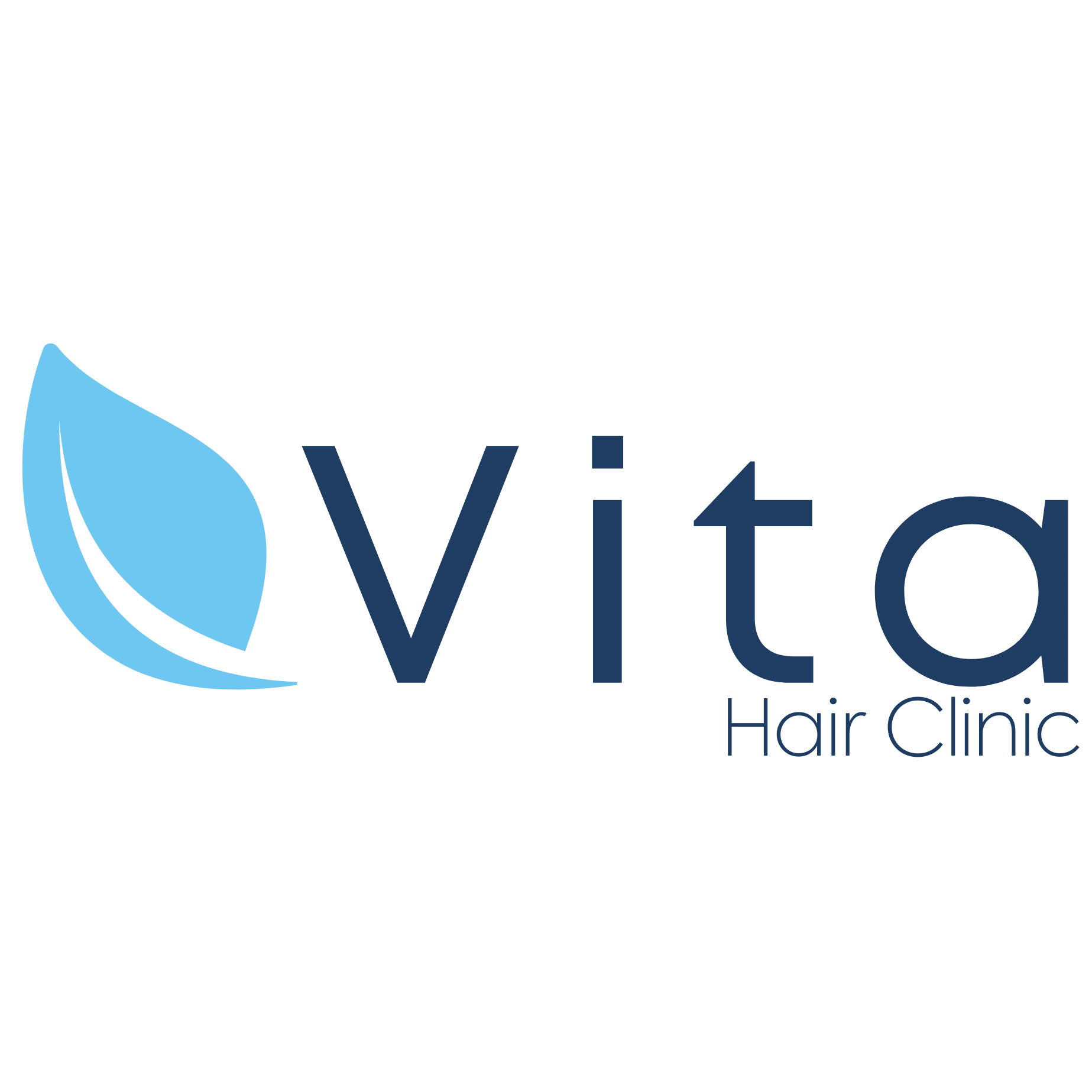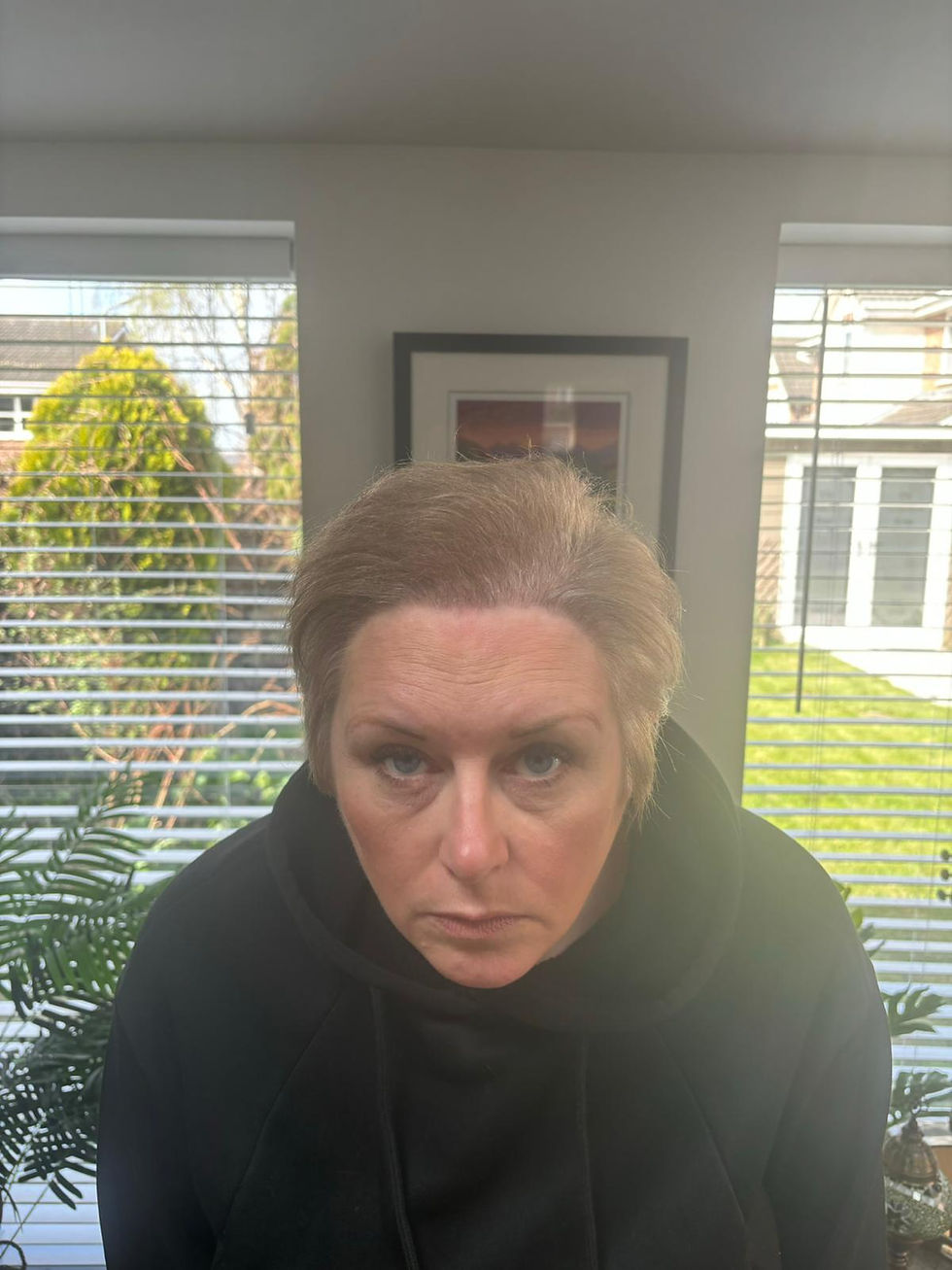How Testosterone and DHT Hormone Impact Hair Loss
- Vita Hair Clinic

- Sep 6, 2025
- 6 min read

When exploring how testosterone affects hair loss and what is DHT hormone, it’s essential to start with clear definitions:
Testosterone is the primary male sex hormone responsible for masculine traits like muscle mass, voice depth, and body hair.
DHT (dihydrotestosterone) is a powerful derivative of testosterone formed by the enzyme 5-alpha reductase.
Understanding these hormones’ roles helps clarify why androgenic alopecia, or male pattern baldness, occurs. In individuals genetically sensitive to DHT, this hormone binds to scalp hair follicles causing them to shrink—a process called follicle miniaturization. This shrinking leads to thinner hair strands and gradually visible hair loss.
The connection between hormones and male pattern baldness highlights why how testosterone affects hair loss is not about testosterone alone but its conversion into DHT. Recognizing this hormonal interplay empowers you to make informed decisions on managing hair loss effectively.
For those experiencing significant hair loss, understanding the Norwood Hair Loss Scale can provide valuable insights into the stages of male pattern baldness.
This knowledge can help in exploring potential solutions such as hair restoration treatments which include both non-surgical and surgical options tailored to individual needs.
Among these solutions, hair transplants have gained popularity due to their effectiveness. However, it's crucial to understand the recovery and aftercare involved post-surgery to ensure optimal healing and results.
The Role of Testosterone in Male Health and Development
Testosterone is the primary male sex hormone responsible for many essential functions throughout a man’s life. It belongs to a group of hormones called androgens, which regulate the development and maintenance of masculine characteristics.
Key aspects of testosterone function include:
Muscle Mass and Strength: Testosterone promotes protein synthesis, helping build and maintain muscle tissue. This hormone plays a crucial role in physical strength and endurance.
Mood and Cognitive Health: Adequate testosterone levels contribute to emotional well-being, confidence, and mental clarity. Low levels may be linked with fatigue, irritability, or depression.
Reproductive Functions: Testosterone drives the development of male reproductive organs, supports sperm production, and influences libido (sexual desire).
During puberty, rising testosterone levels trigger changes such as deepening voice, growth of facial and body hair, and increased bone density. Beyond physical development, this hormone maintains sexual health and vitality throughout adulthood.
Testosterone operates by binding to androgen receptors in various tissues, signaling them to perform specific biological tasks. Its balance is vital; too little or too much can disrupt normal bodily functions.
This hormone’s influence is broad but intricately connected with its conversion to dihydrotestosterone (DHT), which affects certain tissues differently — especially hair follicles. Understanding testosterone’s role sets the stage for exploring how its transformation impacts hair loss.
In cases where hair loss becomes a concern due to hormonal changes or other factors, solutions such as hairline transplants can provide a viable option. These procedures are designed to achieve natural-looking results through advanced techniques like DHI.
For those considering this option, consulting with an expert like Dr. Kinyas Dusunmez can offer valuable insights into the process.
If you're interested in learning more about these procedures or have specific questions, feel free to reach out through our contact page.
What is DHT (Dihydrotestosterone) and How Does it Form?
Understanding DHT hormone definition is key to grasping its role in hair loss and male health. Dihydrotestosterone, or DHT, is a powerful androgen derived from testosterone, the primary male sex hormone. The transformation occurs through the action of an enzyme called 5-alpha reductase.
How DHT Forms
The process of DHT formation involves two main steps:
Testosterone to DHT conversion: This enzyme converts testosterone into DHT by reducing the hormone's structure, making DHT much more potent.
Enzyme location: 5-alpha reductase is found in various tissues including the skin, scalp, liver, and prostate gland.
The Difference Between DHT and Testosterone
What is DHT compared to testosterone? The critical difference lies in potency. DHT binds more strongly to androgen receptors—up to five times more effectively than testosterone—amplifying its biological effects on target cells.
Factors That Cause DHT Levels to Increase
Factors what cause DHT to increase include:
Higher activity of 5-alpha reductase enzyme
Genetic predisposition influencing enzyme levels
Age-related hormonal fluctuations
Because of this increased potency, even small amounts of DHT can have significant effects on tissues sensitive to androgens, such as scalp hair follicles and the prostate. This explains why DHT plays a central role in conditions like male pattern baldness and prostate enlargement.
The Impact of Testosterone Conversion to DHT on Hair Follicles
To understand how testosterone affects hair loss, we need to look at its conversion into dihydrotestosterone (DHT).
In the body, an enzyme called 5-alpha reductase changes testosterone into DHT, which is a hormone with much stronger effects. This process mainly happens in certain areas of the body, such as the skin and hair follicles.
How DHT Affects Hair Follicles
Once DHT is formed, it directly interacts with the receptors in scalp hair follicles, especially in people who are genetically predisposed to male pattern baldness.
These follicles become sensitive to DHT's influence, leading to a process called hair follicle miniaturization:
Hair follicles gradually shrink in size.
The growth phase of each hair cycle shortens.
New hairs that grow are thinner and shorter.
Over time, the affected follicles may stop producing visible hair altogether.
This miniaturization process is central to androgenic alopecia. It explains why even with normal or high levels of testosterone, hair loss can still happen due to testosterone conversion to DHT and its specific impact on genetically vulnerable scalp follicles.
DHT acts like a “signal” telling these sensitive follicles to slow down and eventually stop producing thick, healthy hair.
Why Targeting DHT is Important for Treating Hair Loss
Understanding this mechanism helps clarify why treatments that focus on reducing DHT production or blocking its receptor binding are common strategies in managing male pattern baldness. One such treatment option is a hair transplant, which can provide a solution for those experiencing severe hair loss.
However, many individuals have questions about the aftermath of this procedure. Specifically, they wonder whether transplanted hairs fall after a hair transplant.
Understanding the dynamics of hair transplants and what happens afterward can greatly benefit those contemplating this choice.
Causes and Effects of Increased DHT Levels Beyond Hair Loss
Understanding the factors increasing DHT levels helps clarify why some men experience more pronounced effects than others. Two main elements play a role:
Genetic Sensitivity: Your genes influence how sensitive your hair follicles and other tissues are to DHT.
Some individuals inherit hair follicles that react strongly to DHT, leading to faster miniaturization and hair loss. This genetic predisposition can also result in specific conditions such as a bald spot on the crown, which can be distressing but there are effective treatments available.
Enzyme Activity Levels: Higher amounts or increased activity of 5-alpha reductase lead to more conversion of testosterone into DHT, elevating its concentration in the body.
Beyond hair loss, elevated DHT levels have been linked with conditions affecting the prostate gland:
Benign Prostatic Hyperplasia (BPH): This non-cancerous enlargement of the prostate is common in older men. DHT stimulates prostate tissue growth, contributing to urinary symptoms such as difficulty urinating or increased frequency.
Prostate Cancer Risk: While research continues, some studies suggest that higher DHT levels may increase the risk or progression of prostate cancer by promoting abnormal cell growth in the prostate gland.
Understanding how testosterone affects hair loss and what is DHT hormone provides insight into these broader health concerns.
If you notice symptoms related to BPH or have concerns about hormone balance, discussing them with your healthcare provider can guide proper evaluation and management tailored to your needs.
Additionally, if you're considering solutions for hair loss such as a hair transplant, it's crucial to be aware of potential hair transplant side effects and how to overcome them effectively.
FAQs (Frequently Asked Questions)
What is the connection between testosterone, DHT hormone, and hair loss?
Testosterone is converted into Dihydrotestosterone (DHT) by the enzyme 5-alpha reductase. DHT is a potent androgen that can bind to hair follicles, especially in genetically predisposed individuals, causing hair follicle miniaturization leading to androgenic alopecia or male pattern baldness.
How does testosterone function in male health and development?
Testosterone is the primary male sex hormone responsible for developing male characteristics. It influences muscle mass, mood regulation, reproductive functions, and overall male health by exerting androgenic effects throughout the body.
What is DHT and how is it formed from testosterone?
Dihydrotestosterone (DHT) is a potent androgen formed when testosterone is converted by the enzyme 5-alpha reductase. This conversion increases androgenic activity as DHT binds more strongly to androgen receptors compared to testosterone.
How does the conversion of testosterone to DHT impact hair follicles?
The conversion of testosterone to DHT leads to increased levels of DHT binding to scalp hair follicles. In individuals genetically sensitive to DHT, this causes hair follicle miniaturization, reducing hair growth and resulting in male pattern baldness.
What factors cause increased levels of DHT beyond hair loss concerns?
Factors such as genetic predisposition affecting sensitivity to DHT and enzyme activity can increase DHT levels. Elevated DHT is also associated with benign prostatic hyperplasia (BPH) and may increase risks related to prostate gland enlargement or prostate cancer in men.
Why is understanding the roles of testosterone and DHT important in addressing male pattern baldness?
Understanding how testosterone converts into DHT and how DHT affects hair follicles helps in identifying the hormonal causes behind male pattern baldness. This knowledge aids in developing targeted treatments that can inhibit DHT production or block its effects on hair follicles.
Still have questions? Discover more answers in our full FAQ section













.png)
Comments